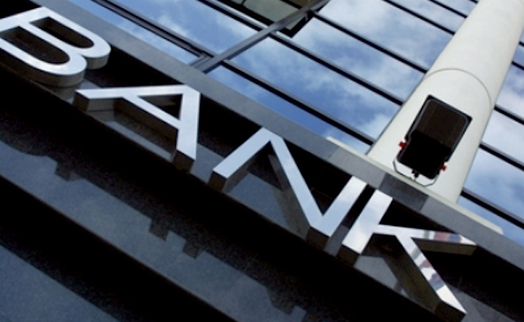14.10.2014 16:02

YEREVAN, October 14./ARKA/. Loan loss reserves of Armenia’s commercial banks rose by 37% to 50.9 billion drams in the first half of this year, as compared to H1 2013.
Reserves for loans have grown from 15.2 billion drams in 2010 to 36 billion drams in 2013, whereas loan investments hiked by 93% in the same period, from 918.4 billion drams to 1,776.9 billion drams respectively. Loan investments amounted to 1,859.3 billion drams as of the end of June 2014, an increase of 12% compared to the same period of the year before.
“As we understand it, loan risks grow amid increasing household debt, but banks tend to build up an ‘appetite’ for risk under strong competition conditions in the market”, says the bank risk-taking supervision department at Bank VTB (Armenia).
Household debt loan has increased by 2.6 times over the last five years and is now a threefold of monthly wages on average. At the same time, commercial banks’ aggregate loans were about 595,900 drams per capita.
Lack of efficient debt collection tools also contributes to growing loan risks, the bank says. People are reluctant to pay off in the absence of efficient collection tools, according to the statement.
Financial analysts say overdue loans account for 6-7% in the banking system today, which is quite high compared to about 5% before.
This means Armenian banks build up reserves for possible loan losses due to increased risks amid growing demand for loans among the population.
The situation may lead, first of all, to declining lending rates - the more risks there are, the more banks have to revise their decision-making strategies”, says the risk supervision department. On the other hand, the situation may provoke increase in loan rates, which, in turn, may create a need for additional capitalization.
It should also be mentioned that increased funds for possible loan loss reserve had a negative impact on profits. Armenian banks’ profits dropped 13.6% in the first half of this year to about 17.8 billion drams, compared to the first half of 2013. Out of 21 commercial banks 15 were profitable in the first half, whereas the remaining 6 suffered total losses of 2.7 billion drams. For comparison, only three banks suffered a total of 1.6 billion drams in loss in the first half of 2013.
Anelik Bank says reserves on possible loss increase for two reasons: first, growing consumer loans, and, the second, bankruptcy of a number of major corporate borrowers considered in the reserves.
“Reserves are increased due to growing consumer lending, when banks extend loans at an efficient interest rate of 35% and higher. This, in turn, happens because banks plan high risks in their loan portfolio without any deep analysis of the solvency, as risks are covered somehow by high profits. Finally, the situation triggers increase of classified loans in the banking system”, the bank says in commenting the situation on the reserves.
Anelik Bank experts believe the trend for increasing reserves on classified loans will be maintained in 2014-2015. In terms of corporate loans reserve fund will continue growing as there are still problematic corporate clients who are not yet covered by the reserve or are still in refinancing process, the experts say.
According to former head of the Central bank of Armenia Bagrat Asatryan, general economic situation affects the quality of the loan portfolio and provokes increase in bad loans and loan loss reserves.
Asatryan also said all key bank performance indicators see a slowdown.
“We record practically no asset growth amid growing capitalization. Growth rates for assets, capital and other indicators have been slower this year than during the recession years”, he said.
As of the end of June 2014, assets of Armenia’s banks amounted to 2,916.7 million drams, a decrease of 0.74% from the beginning of the year. Liabilities dropped 1.61% to 2,429.6 million drams and capital rose 3.85% to 487.1 million drams.
Decline in banks’ profits in the first six months is caused by seasonal variations, according to Asatryan.
According to the Central Bank regulations, the amount of the reserve depends on loan category. There are five categories – standard, supervised (up to 90 days overdue), non-standard (91-180 days overdue), doubtful (181-270 days overdue) and bad loans (271 and more days overdue). The bank creates a 10% reserve for supervised loans, 20% of the outstanding balance for non-standard, 50% for doubtful and 100% for bad loans. Banks’ loan classification is based on risk assessment. –0--
Read the news first and discuss them in our Telegram
Tags:






























